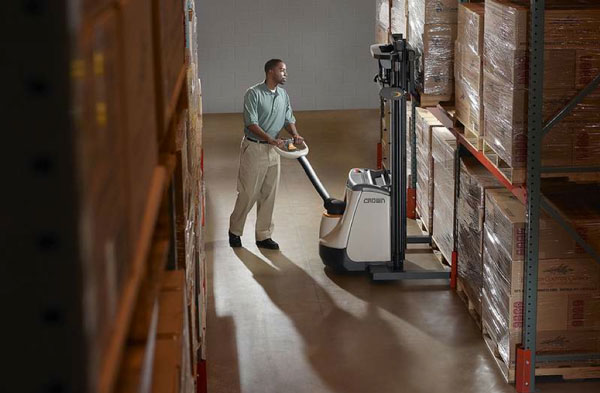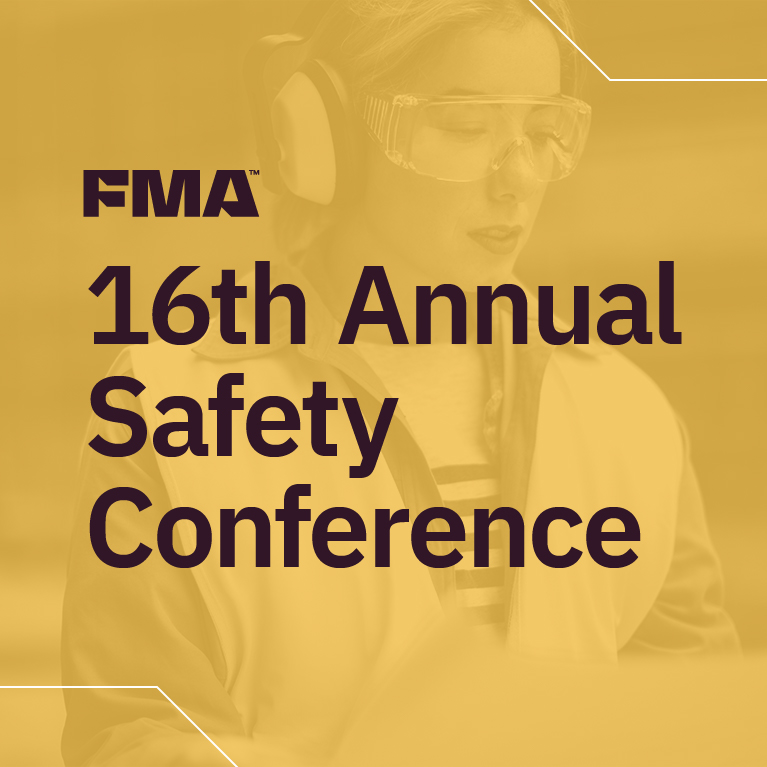Environmental Management System Formalizes Zero Landfill Achievement
By Kate Bachman | May 7, 2014
Category:
When the Ohio Environmental Protection Agency (EPA) comes out to visit Crown Equipment Corporation in New Bremen, Ohio, Environment Health & Safety (EHS) manager Tonja Rammel isn’t nervous. In fact, she looks forward to it. They’ll visit, they’ll chat about the company’s environmental initiatives and achievements—one of which is its zero landfill status at three of its facilities—and discuss pollution prevention ideas. In fact, when the agency officials come, it’s most likely because Crown has invited them.
“We have such a great relationship with the Ohio EPA. In my role, I value that times 10.”
The Ohio EPA recognized Crown Equipment’s environmental stewardship with the first-ever gold-level award in its Encouraging Environmental Excellence (Ɛ3) program. To earn a gold-level award, a business must have an excellent environmental compliance record, complete environmental stewardship activities, have an active environmental management system and commit to pursue environmental improvement projects during the next three years.
Their professional relationship, and the regulatory flexibility that accompanies it, is one of the many benefits Rammel attributes to the global material handling equipment manufacturer’s environmental management system (EMS), she said.
Environmental Management System Facilitates Zero Landfill
Rammel said that the company, with more than 10,000 employees worldwide, wanted to develop an EMS, in part to improve its environmental performance and strengthen its relationship with its community. While Crown had been using the EMS for a number of years, it formalized the process in 2010 to make sure it tied into ISO 14001.
Rammel already had familiarity with EMS and ISO 14001 at her former employer’s facility. “An environmental management system always made a lot of sense to have in place. It ties everything together–your policies, procedures, forms … and you get everybody involved, not only at the upper management level, but also employee level. It makes things visible to everyone at all levels.”
Another major driver for the EMS was to satisfy customer expectations, Rammel said. “Honestly, numerous customers across the U.S and worldwide ask, ‘Do you have an ISO 14001 or environmental management system in place?’”
Steps to Implementing an EMS
The company’s EMS was mostly homegrown, building on Rammel’s familiarity with ISO 14001 from past experience.
The company hired a consultant to perform a gap analysis to recommend fixes. From that gap analysis, Crown developed the program.
Rammel recommends to other manufactures that once waste is identified, to pick off “low-hanging fruit” first, as with any environmental program. “As time goes on, and your environmental knowledge expands and your program progresses, you see the bigger picture.”
Dumpster Dive. Rammel said that the first step to zero landfill was to do a dumpster dive. “It created a buzz. I’m emptying out these trash cans to see what was being thrown away, and employees would see me and ask, ‘What are you doing?’ Then they got involved. ‘Hey did you see this?’ You create the environment.”
Cross-functional Team. Rammel said that employee involvement is critical to the program’s success, and that the key to employee involvement is developing a cross-functional team. “You draft people from maintenance, from each of the lines, from management, so you have a well-rounded team.
She said that employees on the lines provide some of the best ideas. “They know it best. They live it. If you don’t have their insights into the process, you’re missing the boat quite frankly. They bring a multitude of ideas to us. ‘Have you thought of this? Can we recycle that?’”
The company’s facilities that have achieved zero landfill are its New Knoxville electric motors and plastic parts facility (2010); New Bremen electronics manufacturing plant (2011); and Crown Lift Truck plant in Dayton (2012).
In previous years, the Dayton facility annually sent an estimated 150 to 200 cubic yards of waste to landfills. After implementing recycling initiatives and removing disposable items from its operations, the facility has realized a near-reversal of those numbers, generating 200 cubic yards of recyclables and 60 cubic yards of non-recyclable waste. The nonrecylable waste is used for power generation.
Non-waste Projects
One of Crown Equipment’s most recent energy efficiency projects was replacing the metal halide lighting in its New Knoxville facility to T5 and T8 fluorescent lighting. The company saves $10,000 annually as a result.
Other facility improvements followed, including updating manufacturing equipment such as its old hydraulic injection molding presses. “Our company managers knew that they really aren’t environmentally sound; they’re old technology. They said, ‘Let’s upgrade them. And while we’re looking at those upgrades, let’s find something energy efficient.’”
Results: Priceless
Crown eliminated costs for handling trash and eliminated daily garbage truck travel to the New Knoxville facility plant. Trash management costs decreased from $30,000 per year to $15,000 per year. Although the savings may not be extraordinary, Rammel said she thinks that the overall results are priceless.
The EMS helped Crown realize other business benefits, Rammel said. “It provides us with a competitive advantage within the lift truck industry to say that we focus on sustainable manufacturing and have an environmental management system.”
Not only did the manufacturer reap the environmental benefits of having an EMS, it experienced safety improvements as well.
“It’s a great system. It’s great for your company.” Rammel added, “You’ve got to have the resources to support it. One of the caveats of ISO 14001 is that you’ve got to continuously improve. You’ve really got to have a mindset to dig deep to do that.” A third-party agency audits the company’s system on an annual basis.
In bestowing Crown Equipment with the gold-level Ɛ3 award, Ohio EPA Director Craig W. Butler said, “This facility shows that being environmentally responsible is good for the economy and part of being a good corporate citizen. We hope other Ohio businesses and organizations will follow Crown’s lead and go above and beyond the requirements of environmental regulations to make Ohio a better place to live and work.”
The environmental management system internalized environmentalism throughout the company, Rammel said. “It becomes engrained in everything that you do. It becomes second nature.”
Crown Equipment Corp., 44 South Washington St., New Bremen, OH 45869 USA, 419-629-2311, www.crown.com/usa.
__________________________________________________________________
Editor’s Note: Crown Equipment Environment Health & Safety (EHS) manager Tonja Rammel will relay how the manufacturer achieved zero-waste-to-landfill at our Zero Waste to Landfill Workshop hosted by Crown on Oct. 16 in New Bremen, Ohio. Don’t miss it! sustainablemfr.com/waste/take-zero-waste-landfill-challenge

Side by side, we move metal fabrication forward.
FMA unites thousands of metal fabrication and manufacturing professionals around a common purpose: to shape the future of our industry, and in turn shape the world.
Learn More About FMA


